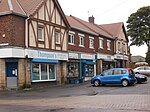1999 World Masters Athletics Championships

1999 World Masters Athletics Championships is the thirteenth in a series of World Masters Athletics Outdoor Championships (called World Veterans Championships or World Veterans Athletics Championships at the time) that took place in Gateshead, England from 29 July to 8 August 1999. An official website was established for the first time in this series: http://www.gatesheadmbc.gov: 26 The main venue was Gateshead International Stadium; some stadia events were held at Riverside Stadium and Monkton Stadium.: 189 : 24 : 15 This edition of masters athletics Championships had a minimum age limit of 35 years for women and 40 years for men.: 15 The governing body of this series is World Association of Veteran Athletes (WAVA). WAVA was formed at the inaugural edition of this series at Toronto in 1975, then officially founded during the second edition in 1977. During General Assembly on 5 August at this Championships, a proposed amendment to change the name of the organization from WAVA to World Association of Masters Athletes (WAMA) was defeated, : 24 : 55 though the name would eventually be changed to World Masters Athletics (WMA) at the Brisbane Championships in 2001.: 56 This Championships was organized by WAVA in coordination with a Local Organising Committee (LOC) led by Mike Newton.: 23 : 15 In addition to a full range of track and field events, non-stadia events included 10K Cross Country, 10K Race Walk (women), 20K Race Walk (men), and Marathon.
Excerpt from the Wikipedia article 1999 World Masters Athletics Championships (License: CC BY-SA 3.0, Authors, Images).1999 World Masters Athletics Championships
Neilson Road,
Geographical coordinates (GPS) Address Phone number Website Nearby Places Show on map
Geographical coordinates (GPS)
| Latitude | Longitude |
|---|---|
| N 54.961111 ° | E -1.579722 ° |
Address
Gateshead International Stadium
Neilson Road
NE10 0EF , Mount Pleasant
England, United Kingdom
Open on Google Maps









